
Uranium is a chemical element; it has symbol U and atomic number 92. It is a silvery-grey metal in the actinide series of the periodic table. A uranium atom has 92 protons and 92 electrons, of which 6 are valence electrons. Uranium radioactively decays, usually by emitting an alpha particle. The half-life of this decay varies between 159,200 and 4.5 billion years for different isotopes, making them useful for dating the age of the Earth. The most common isotopes in natural uranium are uranium-238 and uranium-235. Uranium has the highest atomic weight of the primordially occurring elements. Its density is about 70% higher than that of lead and slightly lower than that of gold or tungsten. It occurs naturally in low concentrations of a few parts per million in soil, rock and water, and is commercially extracted from uranium-bearing minerals such as uraninite.

Maralinga, in the remote western areas of South Australia, was the site, measuring about 3,300 square kilometres (1,300 sq mi) in area, of British nuclear tests in the mid-1950s.
Warburton or Warburton Ranges is an Aboriginal Australian community in Western Australia, just to the south of the Gibson Desert and located on the Great Central Road and Gunbarrel Highway. At the 2016 census, Warburton had a population of 576.

Rum Jungle is a locality in the Northern Territory of Australia located about 105 kilometres south of Darwin on the East Branch of the Finniss River. It is the site of a uranium deposit, found in 1949, which has been mined.
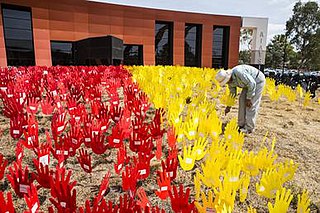
The Australian Institute of Aboriginal and Torres Strait Islander Studies (AIATSIS), established as the Australian Institute of Aboriginal Studies (AIAS) in 1964, is an independent Australian Government statutory authority. It is a collecting, publishing, and research institute and is considered to be Australia's premier resource for information about the cultures and societies of Aboriginal and Torres Strait Islander peoples.
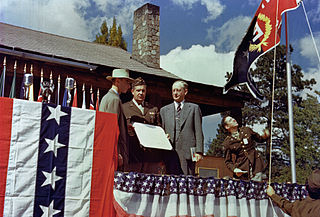
The Manhattan Project was a research and development project that produced the first atomic bombs during World War II. It was led by the United States with the support of the United Kingdom and Canada. From 1942 to 1946, the project was under the direction of Major General Leslie Groves of the US Army Corps of Engineers. The Army component of the project was designated the Manhattan District; "Manhattan" gradually became the codename for the entire project. Along the way, the project absorbed its earlier British counterpart, Tube Alloys. The Manhattan Project began modestly in 1939, but grew to employ more than 130,000 people and cost nearly US$2 billion. Over 90% of the cost was for building factories and producing the fissionable materials, with less than 10% for development and production of the weapons.
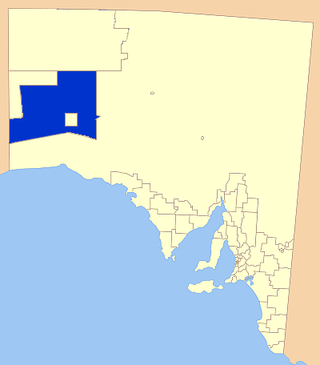
The Maralinga Tjarutja, or Maralinga Tjarutja Council, is the corporation representing the traditional Anangu owners of the remote western areas of South Australia known as the Maralinga Tjarutja lands. The council was established by the Maralinga Tjarutja Land Rights Act 1984. The area is one of the four regions of South Australia classified as an Aboriginal Council (AC) and not incorporated within a local government area.

The United States Radiation Exposure Compensation Act (RECA) is a federal statute implemented in 1990, set to expire in July 2024, providing for the monetary compensation of people, including atomic veterans, who contracted cancer and a number of other specified diseases as a direct result of their exposure to atmospheric nuclear testing undertaken by the United States during the Cold War as residents, or their exposure to radon gas and other radioactive isotopes while undertaking uranium mining, milling or the transportation of ore.
B. Wongar is a Serbian-Australian writer. For most of his literary career, the concern of his writing has been, almost exclusively, the condition of Aboriginal people in Australia. His 1978 short story collection, The Track to Bralgu, was released to critical acclaim by the foreign press, who were led to believe by publisher Little Brown that Wongar was of Aboriginal ethnicity. The revelation that Wongar was a Serbian immigrant, as well as inconsistencies in his life story, have led to controversy and allegations of literary hoax and cultural appropriation.
The Campaign Against Nuclear Energy (CANE) was established in Perth, Western Australia on 14 February 1976 by Friends of the Earth (FOE). It included Peter Brotherton, John Carlin, Mike Thomas and Barrie Machin. CANE was a non-profit grass roots organisation whose aim was to stop the establishment of a nuclear power plant in Western Australia (WA) and to halt uranium mining. The organisation operated out of the Environment Centre in Wellington Street, Perth. The Whitlam Federal government in 1974 had dedicated about A$7,000 per state to set up Regional Environment Centres. Perth's Environment Centre housed other groups including the Australian Conservation Foundation, the Conservation Council of Western Australia, Friends of the Earth, and the Campaign to Save Native Forests. A CANE group was also established in Adelaide, South Australia.
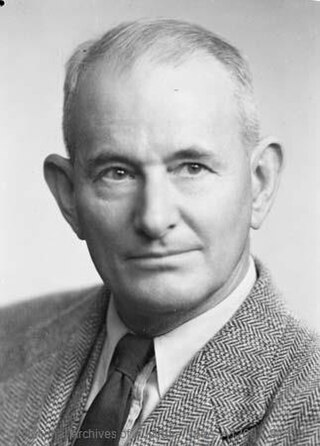
Charles Pearcy Mountford OBE was an Australian anthropologist and photographer. He is known for his pioneering work on Indigenous Australians and his depictions and descriptions of their art. He also led the American-Australian Scientific Expedition to Arnhem Land.
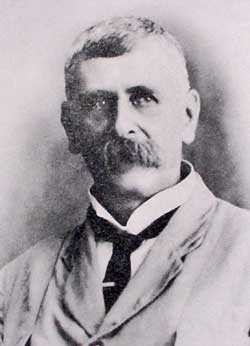
Walter Edmund Roth was a British colonial administrator, anthropologist and medical practitioner, who worked in Queensland, Australia and British Guiana between 1898 and 1928.

Kakadu National Park, located in the Northern Territory of Australia, possesses within its boundaries a number of large uranium deposits. The uranium is legally owned by the Australian Government, and is sold internationally, having a large effect on the Australian economy. The mining has been controversial, due to the widespread publicity regarding the potential danger of nuclear power and uranium mining, as well as because of objections by some Indigenous groups. This controversy is significant because it involves a number of important political issues in Australia: Native Title, the environment, and Federal-State-Territory relations.

Kevin Buzzacott, often referred to as Uncle Kev, was an Aboriginal Australian rights campaigner and elder of the Arabunna nation in northern South Australia. He campaigned widely for cultural recognition, justice, and land rights for Aboriginal people. He initiated and led numerous campaigns, including against uranium mining at Olympic Dam mine on Kokatha land and the exploitation of the water from the Great Artesian Basin. He also published a collections of poetry, which included the content of his keynote address at a 1998 conference.

Nuclear weapons testing, uranium mining and export, and nuclear power have often been the subject of public debate in Australia, and the anti-nuclear movement in Australia has a long history. Its origins date back to the 1972–1973 debate over French nuclear testing in the Pacific and the 1976–1977 debate about uranium mining in Australia.
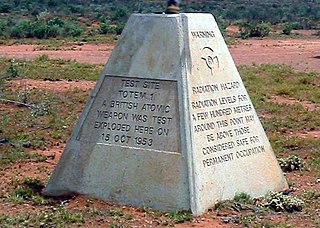
Operation Totem was a pair of British atmospheric nuclear tests which took place at Emu Field in South Australia in October 1953. They followed the Operation Hurricane test of the first British atomic bomb, which had taken place at the Montebello Islands a year previously. The main purpose of the trial was to determine the acceptable limit on the amount of plutonium-240 which could be present in a bomb.
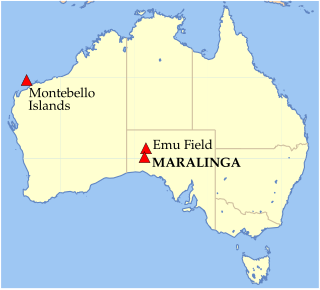
The United Kingdom conducted 12 major nuclear weapons tests in Australia between 1952 and 1957. These explosions occurred at the Montebello Islands, Emu Field and Maralinga.
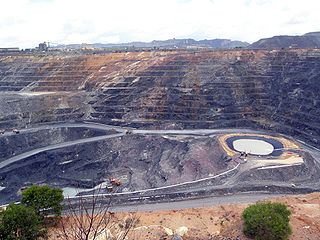
Radioactive ores were first extracted in South Australia at Radium Hill in 1906 and Mount Painter in 1911. 2,000 tons of ore were treated to recover radium for medical use. Several hundred kilograms of uranium were also produced for use in ceramic glazes.
The Kokatha, also known as the Kokatha Mula, are an Aboriginal Australian people of the state of South Australia. They speak the Kokatha language, close to or a dialect of the Western Desert language.















